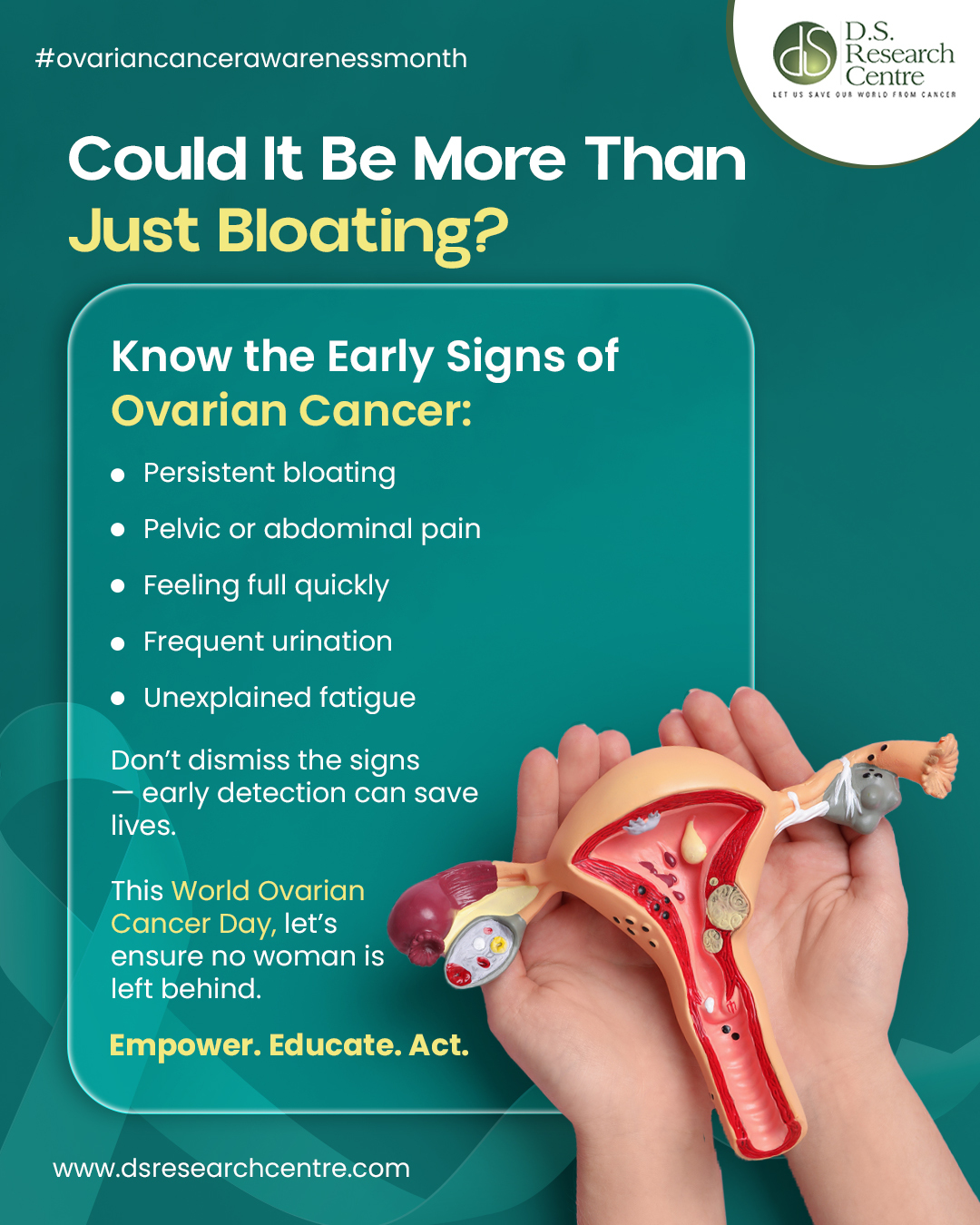This year, 2025, the World Ovarian Cancer Day theme is
“No Woman Left Behind”, which continues a multiyear campaign theme by the World
Ovarian Cancer Coalition. With the goal of educating women about their own
ovarian health reminding them about warning symptoms, seeking medical attention
when needed, inviting leaders to promote participation in
ovarian cancer research, to enable the reach of effective screening and
treatment for ovarian cancer to prevent any further complications.
Ovarian cancer originates in the tissue of the ovaries.
It is also known as “the overlooked disease” or “the silent killer”. Ovarian
cancer can originate from different cell types.
Most ovarian cancers originate in the ovarian epithelium. They usually
present as solid masses that have spread beyond the ovary.
EPIDEMIOLOGY:
- Epithelial cancer is rare in women under 40 years old. Peak incidence occurs
in the 70-74 years age group (57/100,000 population). Older age group is associated
with a poorer prognosis.
WARNING
SIGNS:-
·
75-85% of ovarian cancer cases exhibit
peritoneal spread at diagnosis.
·
Abdominal discomfort
·
Abdominal pain and distension
·
Gastrointestinal symptoms (nausea,
dyspepsia, constipation).
·
Abdominal bloating or swelling, quickly
feeling full when eating.
·
Weight loss.
·
Discomfort in the pelvic area.
·
Fatigue.
·
Back pain.
·
Changes in bowel habits, such as
constipation.
·
A frequent need to urinate.
RISK
FACTORS
·
Reproductive Factors:-
Those women who have given birth exhibit
a 30-60% lower risk compared to nulliparous women (those who have never given
birth). The birth of the first child reduces risk by 45%; each additional
pregnancy reduces risk by 15%. Breastfeeding is associated with reduced risk.
Tubal ligation correlates with lower risk of ovarian cancer. Use of ovulation
induction agents increases risk by 2-3 times if used for more than 12 cycles.
·
Other Factors:-
A history of breast cancer elevates
the risk. Early menarche and late menopause are considered risk factors.
Hormone replacement therapy (HRT) is associated with a slight increase in risk.
Regular use of OCP reduces the risk by 30-60%. High meat and animal fat
consumption increases risk. Low fat diet may lower risk in postmenopausal
women. Obesity is linked to an increased risk of ovarian cancer.
·
Genetic Factors:
General lifetime risk of developing
ovarian cancer is 1.6%. Risk increases to 4% for women with one first-degree
relative affected. Risk further increases to 7% if two first-degree relatives
are affected. 5-10% of all epithelial ovarian cancers result from hereditary
predisposition. The frequency of BRCA1 mutation is approximately 1 in 800. 62%
of patients with epithelial ovarian cancer have a mutation of the p53 gene.
PREVENTIVE
MEASURES:-
·
OCP (chemoprevention) carries the highest
protective effect against ovarian cancer.
·
Taking OCP for at least 5 years can reduce
relative risk by 50%.
·
Tubal ligation and hysterectomy also lower
risk.
·
Prophylactic oophorectomy (removal of
ovaries) is often performed alongside hysterectomy for benign
conditions. Prophylactic oophorectomy in women with BRCA1 and BRCA2 mutations
after age 30-35 can decrease risk by 80%. Women with BRCA mutations should have
trans-vaginal ultrasound (TVS) and CA125 levels monitored every 6-12 months
starting at age 25-35. Genetic testing for BRCA1 and BRCA2 is recommended.
SCREENING:
·
BRCA1 or BRCA2 mutations, one close
relative (like a mother or sister) with ovarian cancer associated with a BRCA1
or BRCA2 mutation
·
Lynch syndrome (hereditary nonpolyposis
colorectal cancer), which can also cause a hereditary form of colon cancer
·
Trans-vaginal ultrasound: This imaging technique
(a type of pelvic ultrasound) involves guiding a wand-shaped imaging tool into
the vagina. It can show clear detail of the female reproductive organs,
including possible signs of cancer.
·
CA-125 blood test: This blood test checks
blood for a protein (cancer antigen 125) that most ovarian cancer cells make.
DIAGNOSIS:
·
Early-stage cancer is typically diagnosed
through abdominal and pelvic examination.
·
In premenopausal women, functional cysts
usually do not exceed 8 cm and typically resolve without treatment in 2-3
months.
·
Adnexal masses in pre-menarchal and
post-menopausal women have a higher likelihood of being malignant.
STAGES:
·
In stage 1 the cancer is limited to the
ovaries.
·
In stage 2 the growth involves one or both
ovaries, with pelvic extension.
·
Stage 3 cancers have spread to the lymph
nodes and other organs or structures inside the abdominal cavity.
·
In stage 4, the cancer has metastasized to
distant sites
TREATMENT:-
·
Surgery: An operation in which doctors cut
out the cancer.
·
Chemotherapy: Use of special medicines to
shrink or kill the cancer. The drugs can be pills you take or medicines given
in your veins, or sometimes both.
·
Targeted therapy: Use of drugs to block the
growth and spread of cancer cells. The drugs can be pills you take or medicines
given in your veins. You will get tests to see if targeted therapy is right for
your cancer type before this treatment is used.
·
Ayurvedic medicines that include
Ashwagandha, Shatavari prove helpful in revitalizing physical health of women.








Posted on April 15, 2016
Posted on April 15, 2016